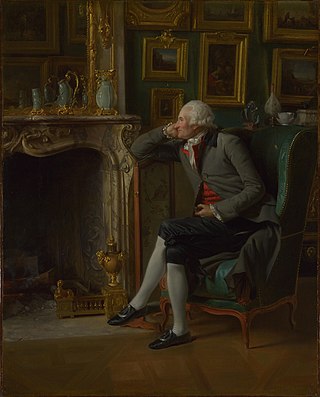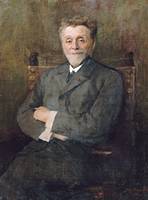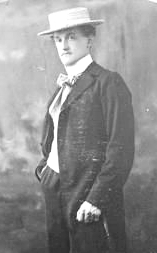
The Bibliothèque nationale de France is the national library of France, located in Paris on two main sites known respectively as Richelieu and François-Mitterrand. It is the national repository of all that is published in France. Some of its extensive collections, including books and manuscripts but also precious objects and artworks, are on display at the BnF Museum on the Richelieu site.

Jacques Doucet (1853–1929) was a French fashion designer and art collector. He is known for his elegant dresses, made with flimsy translucent materials in superimposing pastel colors.

Henri-Pierre Danloux was a French painter and draftsman.
Guillaume Bochetel, seigneur de Sassy, Brouillamenon, Laforest-Thaumyer was a statesman and diplomat of the French Renaissance during the reigns of François I and Henry II of France.

Léonce Bénédite was a French art historian and curator. He was a co-founder of the Société des Peintres Orientalistes Français and was instrumental in establishing Orientalist art as a legitimate genre.

Paris, the capital of France, has many of the country's most important libraries. The Bibliothèque nationale de France operates public libraries in Paris, among them the François-Mitterrand, Richelieu, Louvois, Opéra, and Arsenal.

Jean Marot was a French architect and engraver of architectural views. Little has survived of his own architectural work, but his engravings of the works of others, primarily those published in the volumes referred to as the Petit Marot and the Grand Marot (1686), were highly esteemed by his contemporaries and remain, despite numerous inaccuracies and distortions, among the most important sources concerning architecture in France up to the early part of the reign of Louis XIV.

Remy Ladoré was a French draftsman, engraver and painter.
Madeleine Laurain-Portemer was a 20th-century French historian, specializing in the history of Mazarin and his time, married to Jean Portemer (1911–1998).

Jean-Michel Leniaud is a French historian of art. A specialist of architecture and art of the 19th and 20th centuries, he was director of the École Nationale des Chartes from 2011 to 2016. He is president of the Société des Amis de Notre-Dame de Paris.
Louis-Denis Caillouette was a French sculptor. His pupils included the medallist Adrien Baudet
Jeanne Ismérie Robert was a French ancient historian, epigrapher, co-author and editor of many volumes on Greek epigraphy.
Hélène Adant (1903–1985), also known as Hélène Mossolova or Mossoloff, was a Russian-born French photographer. She started her career in France in the 1930s and worked with some of the leading French artists of her day.
Yvette Alde was a French painter, lithographer, and Illustrator. She belongs to the School of Paris.

Estelle de Barescut was a French painter and lithographer. She exhibited her lithographs at the Salon de Paris in 1834 and 1835, and her paintings from 1842 to 1851.

Emmanuelle Polack is a French art historian and author who investigates provenance of works of art in the Louvre as director of research there.

Noël Parfait was a French writer, political activist and republican deputy.

Hilaire Noël Sébastien Clément, known as Clément-Janin (1862–1947) was a French writer and art critic, specializing in the modern history of printmaking.

The Institut d'Art et d'Archéologie is a building at 3 rue Michelet in Paris, built for the educational institution of the same name. It was initially designed in 1920 in a unique eclectic style by architect Paul Bigot, and completed in 1932. It has been dubbed "the most curious building in Paris". It is a campus of the universities of Paris.

Sorbonne University Library is the network of Sorbonne University's libraries and services. It is one of the largest academic library networks in Paris, along with the Université Paris Cité. It should not be confused with the Sorbonne Library, which is part of the Panthéon-Sorbonne University.















